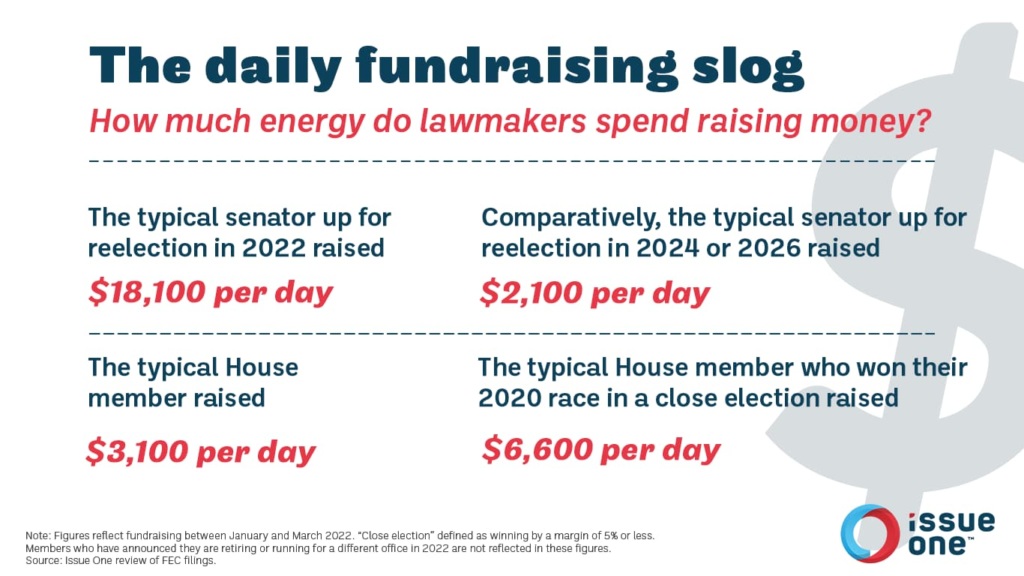Analysis
State money-in-politics reform roundup
This is part of a series examining ethics, transparency and campaign finance proposals in the states. Next week, voters around the country will finally have a chance to vote for…
Analysis

As the 2022 midterms approach, fundraising for congressional races is starting to ramp up. All members of Congress filed their first campaign finance documents of 2022 last week, which detailed their fundraising and expenditures between January 1 and March 31, 2022.
Here are some key numbers to know, based on an Issue One review of these new filings.
The median amount of money raised during the first quarter of 2022 by a sitting senator running for reelection this year was $1.6 million — the equivalent of about $18,100 per day. That’s more than eight times as much money as their colleagues who are not facing reelection this election cycle, who typically raised $185,000 between January and March — about $2,100 per day.
Combined, all incumbent senators raised nearly $105 million from individuals, political action committees, and other sources between January and March. That’s roughly 1.3 times as much as all incumbent senators raised during the same time period two years ago. In total, since January 2021, incumbent senators have raised more than $486 million for their reelection campaigns.
The median amount of money raised between January and March by a member of the House of Representatives running for reelection in 2022 was $275,000 — or about $3,100 per day. The median amount raised by a freshman House member was $314,000 — or about $3,500 per day. The typical House incumbent running for reelection in a race they won by 5 percentage points or less in 2020 raised roughly $593,000 during the fourth quarter — about $6,600 per day, or more than twice as much money as the typical House member.
Combined, all House members raised $172 million from individuals, political action committees, and other sources between January and March. That’s nearly 25% more than all House members raised during the same time period two years ago.Since January 2021, House members have raised a total of about $758 million for their reelection campaigns.
93% of members of Congress — including 92% of House members and all but two senators — have leadership PACs, political action committees that operate in addition to lawmakers’ official campaign committees. These PACs are often criticized by liberals and conservatives alike as slush funds funded by lobbyists. Created in the late 1970s as a way for members of Congress to raise extra money to give away to fellow politicians, leadership PACs open the door to corruption in two ways: Their funding often comes from special interest groups with business before Congress, and some politicians use them to fund lavish lifestyles, often under the guise of fundraising.
Analysis
This is part of a series examining ethics, transparency and campaign finance proposals in the states. Next week, voters around the country will finally have a chance to vote for…
Analysis
With the 2016 elections nearly a month away, it’s time for an update on the various state ballot initiative efforts at money-in-politics reform around the country. Oregon Oregon is one…
Analysis
While Florida’s well-financed sons Governor Jeb Bush and Senator Marco Rubio campaigned and lost this cycle’s presidential contest, advocates in Miami-Dade County are still striving for a money-in-politics victory. And…
